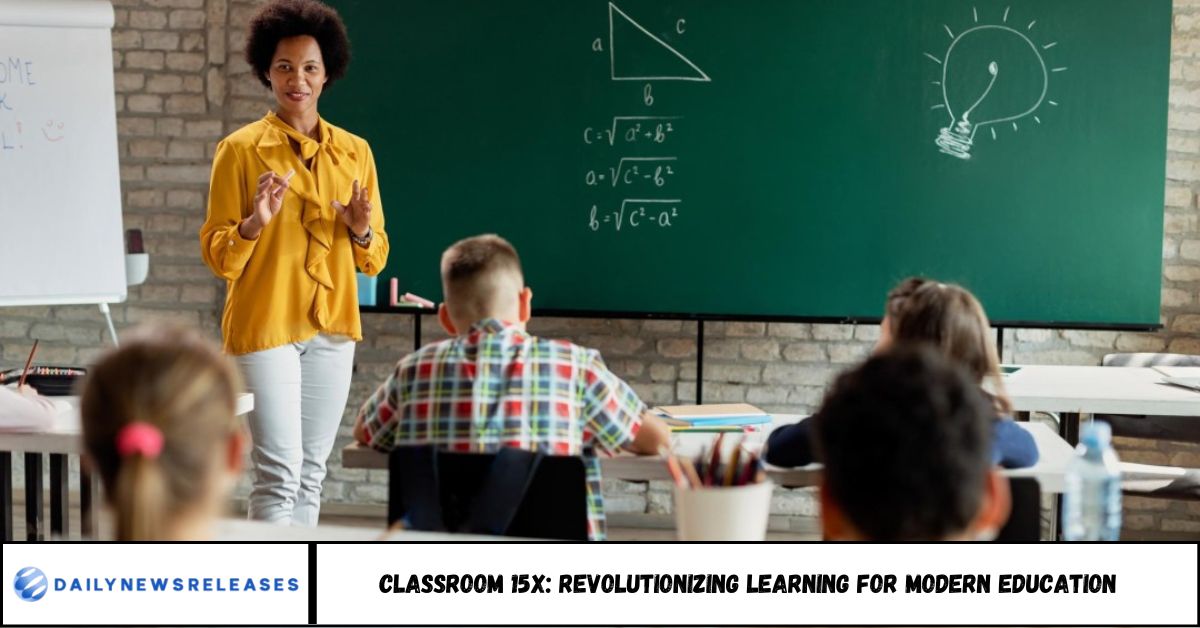Classroom 15x represents the next evolution of modern education—combining flexible design, cutting-edge technology, and learner-centered teaching. This article explains what Classroom 15x is, its proven benefits, how schools can implement it effectively, and what challenges to expect. With data showing higher engagement and retention, it’s clear this model is shaping the future of learning.
Classroom 15x is more than just an upgrade in physical space—it represents a complete reimagining of how learning happens. The “15x” symbolizes a powerful multiplier effect, where education is enhanced fifteenfold through innovative teaching methods, collaborative design, creative problem-solving, and seamless technology integration. Rather than simply enlarging classrooms, Classroom 15x transforms them into dynamic ecosystems that inspire curiosity, critical thinking, and meaningful student engagement.
Classroom 15x: Revolutionizing the Learning Environment
Picture a classroom where students move freely between collaboration hubs, digital workstations, and quiet zones—learning through hands-on projects instead of passive lectures. For decades, education has relied on static spaces that no longer meet the needs of digital-age learners. The question is: How do we create classrooms that truly engage?
That’s where Classroom 15x comes in. This innovative model redefines the learning experience by combining flexible design, advanced technology, and student-driven instruction. In this guide, we’ll explore what Classroom 15x means, its measurable impact, how to build one, and the real-world benefits schools are already seeing.
1. What is Classroom 15x?
Classroom 15x is a modern learning framework designed to make education more interactive, adaptable, and personalized. Unlike traditional classrooms built around fixed desks and one-way instruction, Classroom 15x adapts to each learner’s needs and activity type.
Core Elements Include:
- Flexible Furniture: Movable desks and seating to support group work or individual study.
- Smart Technology: AI-enabled systems, digital whiteboards, and interactive content delivery.
- Data-Driven Insights: Analytics that track engagement and guide teachers in real time.
- Student-Centered Pedagogy: Focus on collaboration, problem solving, and creativity.
Studies in modern education design show that engagement can rise to over 90% in flexible, tech-enabled environments—nearly double that of traditional classrooms.
2. Why Classroom 15x Matters
2.1 Increases Student Engagement
Active learning thrives in dynamic spaces. Flexible layouts and interactive tools keep students focused and motivated, reducing distractions and improving participation.
2.2 Improves Learning Retention
Students retain up to three times more information when learning through collaboration, experimentation, and digital interaction rather than passive listening.
2.3 Encourages Personalized Learning
With adaptive technology, each student can progress at their own pace—accelerating when concepts are easy and getting targeted support when needed.
2.4 Builds Future-Ready Skills
Classroom 15x emphasizes teamwork, creativity, and digital literacy—skills essential for modern careers. Students become more confident, adaptable, and tech-savvy.
2.5 Creates an Inclusive Environment
Flexible layouts and multiple learning modes support diverse learning needs, helping every student find their best way to learn.
3. How to Implement Classroom 15x: Step-by-Step Guide
Step 1: Redesign the Space
- Replace static rows with modular desks and collaborative zones.
- Add writable walls, movable dividers, and standing stations for flexibility.
- Designate quiet areas for concentration and digital hubs for tech activities.
Step 2: Integrate Smart Technology
- Introduce tablets or laptops for personalized assignments.
- Use interactive displays, AR/VR tools, or digital learning platforms to make lessons immersive.
- Leverage analytics to track progress and adjust teaching accordingly.
Step 3: Evolve Teaching Methods
- Shift from lecture-based lessons to project-based learning and discussion-driven classes.
- Allow students to explore real-world challenges and present solutions creatively.
- Use data insights to guide individualized support.
Step 4: Train and Support Educators
- Provide ongoing professional development on digital tools and flexible teaching methods.
- Encourage collaboration between teachers to share classroom layout and lesson innovations.
Step 5: Measure, Review, and Improve
- Collect data on engagement, grades, and feedback before and after changes.
- Adjust layouts and methods based on what works best for your students.
4. Overcoming Common Challenges
| Challenge | Solution |
|---|---|
| Budget Constraints | Start small—transform one classroom first, use affordable furniture, and add tech gradually. |
| Teacher Adaptation | Offer mentoring, workshops, and peer-to-peer support to ease the transition. |
| Tech Access | Ensure all students have access to devices; consider shared resources or grants. |
| Data Privacy | Use secure platforms and train staff in responsible data handling. |
These steps ensure Classroom 15x can be implemented sustainably and inclusively, regardless of school size or funding.
5. Real-World Impact: The Numbers Behind Classroom 15x
Recent studies show measurable improvements after adopting Classroom 15x models:
- Engagement: 90–95% active participation vs. 50–60% in traditional rooms.
- Retention: Up to 80% after one week, compared to 30% in conventional setups.
- Performance: Average test scores increase by 15–20% when tech and flexibility are combined.
The data confirms that investing in Classroom 15x pays off through stronger outcomes and happier, more involved learners.
FAQ
1. What does “Classroom 15x” mean?
It symbolizes a learning environment that performs 15 times better in engagement, flexibility, and innovation than traditional classrooms.
2. Is Classroom 15x only for tech-heavy schools?
No. It’s scalable—schools can start with simple layout changes and minimal tech, then expand over time.
3. How expensive is it to set up?
Basic upgrades can start under a few thousand dollars. Costs depend on equipment, furniture, and technology.
4. Does technology replace teachers?
No. Technology supports teachers—it doesn’t replace them. Teachers remain central as mentors and facilitators.
5. Can Classroom 15x improve exam performance?
Yes. Active engagement and personalized learning can raise academic performance by up to 20%.
6. How can small schools adopt this model?
Begin with one pilot classroom, measure success, and use results to expand gradually.
Conclusion
Education is evolving—and Classroom 15x leads that transformation. By redesigning physical spaces, rethinking teaching styles, and leveraging smart technology, schools can create environments where students engage deeply, learn effectively, and thrive confidently.

